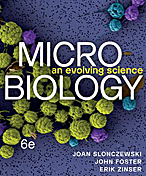Saccharomyces boulardii
A Microbial Biorealm page on the genus Saccharomyces boulardii
Classification
Higher order taxa
Domain (Superkingdom): Eukaryota
Kingdom: Fungi
Subkingdom: Dikarya
Phylum: Ascomycota
Subphylum: Saccharomycotina
Class: Saccharomycetes
Order: Saccharomycetales
Family: Saccharomycetacecae
Species
|
NCBI: Taxonomy |
Genus species: Saccharomyces boulardii
Description and significance
Saccharomyces boulardii is a tropical strain of yeast, first isolated from lychee and mangosteen fruit from Indochina in 1934 by a French scientist by the name of Henri Boulard. Saccharomyces boulardii although similar to Saccharomyces cerevisiae, differs in its non-pathogenic and biotherapeutic features. It has been found to be an effective probiotic that combats a wide range of gastrointestinal disorders (see Biotechnology). S. boulardii have been found to be non-systemic, surviving only in the gastrointestinal tract at low pH levels, and capable of growth at temperatures up to 37°C (3). Saccharomyces boulardii is used in the treatment of a variety of gastrointestinal disorders, anti-biotic-associated diarrhea, nasogastric tube-associated diarrhea, diarrhea in both children and adults, and viral-infection associated diarrhea. It has also shown to weaken the effects of microbial disease caused toxins.
Genome structure
Although there has not been substantial research done on the genome structure of S. boulardii, this is partly due to the fact that it is nearly identical to that of S. cerevisiae. S. cerevisiae was the first eukaryotic genome to be completely sequenced. The completion of the genome was a result of a worldwide collaboration (23). The sequence contains 13,000,000 base pairs, 6,275 genes, 5885 of which are potential protein-encoding genes(23). Approximately 140 genes are strictly for specifying ribosomal RNA, 40 genes are for small nuclear RNA molecules and 275 function as transfer RNA genes (23). It has been observed that there is a significant quantity of redundancy. Approximately 23% of the genome is identical to the human genome (23). Chromosomes possess a single linear double stranded DNA (23).
Cell structure and metabolism
S. boulardii are oval cells with thick-walled cells which are approximately 10 µm long by 5 µm wide (24). The S. boulardii cell wall makes up approximately 30% of the dry weight of the cell and is primarily composed of polysaccharides (85%) and proteins (15%) (24). Extensive biochemical analyses reveal that glucose, N-acetylglucosamine (GlcNAc), and mannose residues represent 80 to 90%, 1 to 2%, and 10 to 20% of the total polysaccharide, respectively (24).
S. boulardii is classified as an anaerobe, meaning it can grow under aerobic or anaerobic conditions( 25). Although it prefers to use glucose, it is possible to use monosaccharides, polysaccharides, oligosaccharides, ethanol, acetate, glycerol, pyruvate, and lactate. Glucose goes through the glycolytic pathway for metabolism. S. bouldardii are heterotrophes, meaning they acquire their energy from glucose (25). S. boulardii prefers fermentation over respiration 98 to 2%, respectively (25). The fermentation pathway is known as Embden-Myerof Pathway (EMP) which yields products of ethanol (25). The consumption of glucose eventually will lead to a condition known as “cell depression”, which initiates oxidation of ethanol into carbon dioxide and water. Carbon sources which are non-fermentable must enter gluconeogenesis (25).
Saccharomyces boulardii acts as a shuttle to liberate enzymes, proteins, trophic factors during its intestinal transit to improve host immune defenses, digestion, and absorption of nutrients (5). S. boulardii is able to secrete polyamines (spermine and spermidine) during the intestinal transit to regulate gene expression hence, protein synthesis (5). S. boulardii relieves symptoms of intestinal injury and inflammation from an array of pathogens (6). In addition, S. bouldardii promotes the secretion of an antibody known as Immunoglobin A (IgA) in rat jejunum (located in small intestine). IgA’s are effective as defense to pathogenic microbes in the gastrointestinal and respiratory tracts (4).
Inflammation of the large intestine and sometimes small intestine is caused by the infiltration of T cells which aggregate in the lymph nodes. S. boulardii reduces inflammation by controlling and limiting T cell infiltration, specifically those T cells within the colon (14). Further research has suggested alternative methods of mechanism for the anti-inflammatory yeast. It was found that S. boulardii exerts anti-inflammatory effects by modulation of host cell signaling and pro-inflammatory gene expression. Specifically, the probiotic yeast is able to obstruct NF-kappaB activation and NF-kappaB-mediated IL-8 gene expression in the intestinal epithelial cells, resulting in the decrease of inflammation (6). In a separate study, researchers found that S. boulardii could also modulate the expression of PPAR-gamma. Stimulation of PPAR-gamma expression by S. boulardii results in a decrease in response of intestinal epithelial cells to proinflammatory cytokines (16).
Ecology
Describe any interactions with other organisms (included eukaryotes), contributions to the environment, effect on environment, etc.
Pathology
How does this organism cause disease? Human, animal, plant hosts? Virulence factors, as well as patient symptoms.
Application to Biotechnology
Does this organism produce any useful compounds or enzymes? What are they and how are they used?
Current Research
Enter summaries of the most recent research here--at least three required
References
Edited by student of Rachel Larsen
